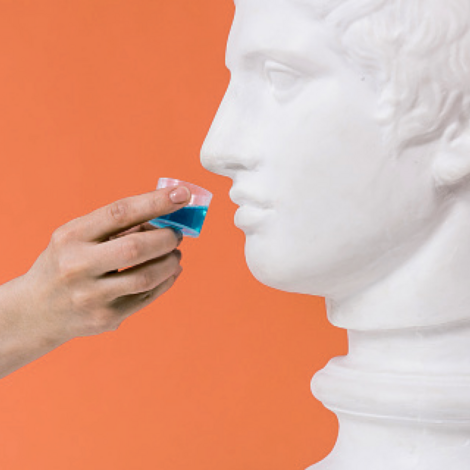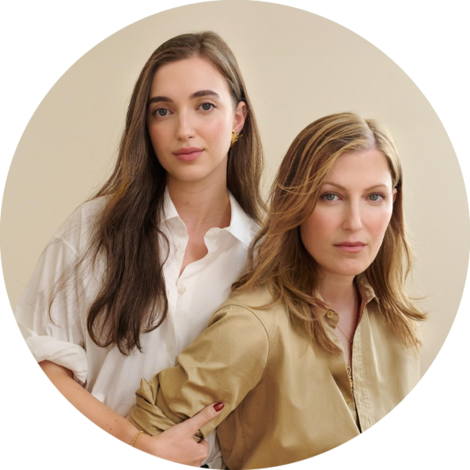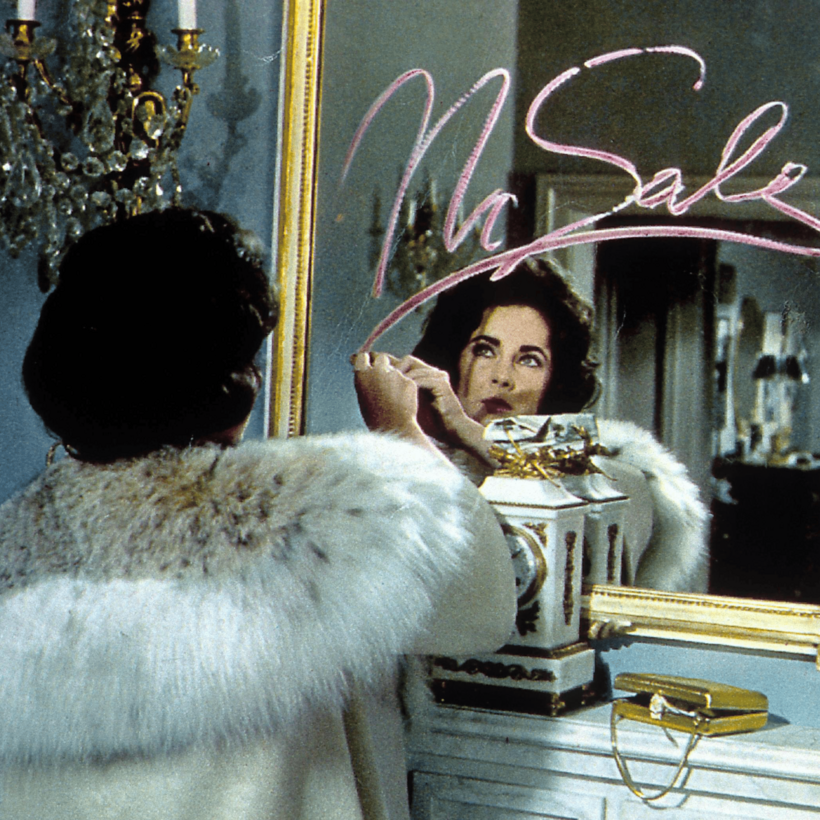I‘m standing in my bathroom, looking at two identical bottles of La Roche-Posay sunscreen. Well, almost identical: one is the La Roche-Posay Anthelios UVMUNE 400 Ultra-Light Invisible Fluid SPF50+ that I bought for $25 in a local pharmacy. The other is from eBay, where I spotted two bottles for $17. Bargain!
Except now, I’m not so sure. My beloved pharmacy-bought sunscreen is creamy in color, with no fragrance and a distinctly runny texture. The version that’s just landed on my doormat is bright white, gloopy, and smells suspiciously like basic sunscreen. The packaging may be convincing, but what’s inside—I feel certain—is counterfeit.
According to new research by the consumer rights organization Which?, I’m not alone in being fooled. After buying and testing products from third-party sellers on online marketplaces such as eBay, Amazon, Vinted, and TikTok Shop, it concluded that 67 percent were imitations of real cosmetics by Charlotte Tilbury, Maybelline, the Ordinary, M.A.C., and, yes, La Roche-Posay.
Spending money on counterfeit cosmetics might be frustrating, but the report also pointed out the health risks. Fakes won’t have met the safety standards required of genuine products and may contain high levels of active ingredients, such as acids.
So-called SPFs might not offer protection at all, increasing the risk of skin cancer or pigmentation. Some have been found to contain toxic chemicals such as arsenic, lead, and mercury, or even animal feces. Sorry, just hold on a moment while I pop that sunscreen I’ve just bought in the trash.
It’s tough to grasp the true scale of the problem. Which? submitted 34 products to visual tests—looking at the packaging and contents—and concluded that 23 were likely to be counterfeit.
Trading Standards reports that, between April 2024 and March 2025, 20 percent of all its investigations into counterfeit goods in the U.K. involved cosmetics and makeup—an increase from 16 percent the previous year. Meanwhile, Which? calculated that more than 1.5 million cosmetics and perfumes were seized by E.U. customs last year, up from 860,000 in 2023.
Victoria Brownlie, chief of policy and sustainability at the British Beauty Council, says that the “dangers of counterfeit cosmetics sold online” is “an issue that has been growing for some years, with the rise of online marketplaces. It’s truly concerning to see the prevalence of fake products on these platforms and we urge the public to exercise extreme caution.”
It is surprisingly easy to buy a fake. Take the SkinCeuticals CE Ferulic serum I order on Vinted, which arrived in the wrong-sized box, using the wrong colors, and with a patent mark on the bottle that doesn’t exist on the real thing.
According to the Cosmetic, Toiletry and Perfumery Association, there are several giveaways that a product might not be genuine, like heavily discounted pricing—that my “new and unopened” serum was $22 for 30ml instead of $225 should have been a red flag—or “flash sales” that encourage you to hit “buy” quickly, without thinking.
Poor-quality listings and stock imagery are other telltale signs. And look out for sellers who have flogged hundreds of the same item—an unlikely 589 of my La Roche-Posay sunscreens had already been sold.
The experts at Which? noted that the counterfeit cosmetics often smelled different when compared with the real thing, came in packaging with misspellings or stylistic differences, and were missing safety labels. The platforms encourage buyers to report suspected fakes and take precautions. Vinted, for example, recommends using its “buy now” button to ensure consumers are covered by its buyer protection.
“Selling counterfeit items is strictly prohibited on Vinted and we’re committed to fighting this issue, which we recognize is a challenge for much of the beauty industry,” a spokesperson says. “We have policies in place to protect our members and encourage them to report any account which may be violating our guidelines, so that we can take appropriate action.”
But what if you’re not sure? Rebekah, 44, a consultant from south London, tells me she bought an expensive Frédéric Malle fragrance from eBay last year, which she’s now convinced was counterfeit.
“I didn’t think about it being fake at the time, I just thought it was off and smelled funny,” she says. “I haven’t bought beauty products like that since as it’s too hard to tell if they are genuine.”
Put simply, some fakes are really hard to spot. An Elemis Pro-Collagen Cleansing Balm I buy from Amazon for $26, usually $38, has several reviews from other shoppers accusing it of being counterfeit (“It burned my skin,” wrote one).
But the balm itself seems comparable to the stuff in my genuine tub—bought in Boots just days earlier—and even though it arrives without a box and isn’t full, I really can’t be sure either way. Amazon, after examining the listing, tells me it can’t find any evidence that it’s a fake.
“We have a zero-tolerance policy for counterfeits and have proactive measures in place to prevent counterfeit products being listed,” a spokesperson says.
“If an issue is raised, we act quickly to protect customers, including removing listings and bad actors from our store, and sharing further guidance from brands for customers. Third-party sellers are independent businesses and are required to follow all applicable laws, regulations and Amazon policies when listing items for sale in our store. These policies require that cosmetics must be sealed in the original manufacturer’s packaging.”
Scrolling down for negative feedback, instead of just reading the most recent reviews, is helpful. “This is a fraud. I’ve used this for years and can see the difference—this has a white color and a scent like an ordinary lotion. Don’t buy it, it won’t protect your skin,” wrote another buyer of my La Roche-Posay sunscreen on eBay.
“We proactively block millions of items every year using trained investigators, technology and buyer protection programmes. We also take action against sellers if they list counterfeit items,” eBay told me.
Meanwhile, TikTok Shop said: “The safety and trust of our customers is our top priority and we strictly prohibit the sale of counterfeit products on TikTok Shop. Our proactive measures have already prevented over 7 million violative items from being listed and we will remove any items that breach our policies.”
The industry seems to be chasing its tail, however, as more and more counterfeit cosmetics are listed. When I message the eBay seller to ask if my sunscreen is “counterfeit”, they don’t deny it and reply saying “This is a good quality product.” Hmm.
They then ask me to send a photo of the cream and, when I do, a message pings back explaining that it “must be a faulty batch” and an immediate refund is issued, meaning that I can’t leave negative feedback.
Only later do I notice that the item description reads “Origin: Mainland China,” while genuine La Roche-Posay products are made in France.
Similarly, when I message the SkinCeuticals seller to query the authenticity of the serum, they claim to have bought it from another user and offer half my money back (“Does that apply to all the bottles you’re selling?” I reply), refunding me in full after I complain to Vinted.
A spokesperson for the L’Oréal Groupe, which owns La Roche-Posay and SkinCeuticals, says: “We are committed to the fight against counterfeiting to protect consumer health and safety, and the integrity of our brands. We actively collaborate with law enforcement agencies worldwide and with online platforms, helping them to identify and seize counterfeit products, and to dismantle the criminal networks involved in this illegal trade.”
Meanwhile, Elemis said: “We recommend purchasing our products only from approved retailers or our website. If any customers are worried about products they’ve bought, please contact our customer care team.”
You can also turn detective, using websites such as Batchcode.org to check when products were manufactured—although fraudsters are now getting smarter, sometimes replicating genuine codes on their fake products.
Little wonder that Brownlie urges consumers to play it safe. “This investigation underscores the urgent need for the public to be vigilant,” she says. “Your safety is paramount, so always purchase your beauty products directly from official brand websites or their authorized stockists. Don’t risk your health for a discount.”
Four Ways to Spot a Fake
How much?
Products being sold at a heavy discount, in flash sales that make you rush to buy without thinking, or as “overstock,” are all signs of a potential fake.
How many?
Take a look at how many of the item the seller has already sold or has listed for sale. Multiples of “new and unopened” products, using stock imagery, are a red flag—especially if it’s sold out elsewhere—and may be untested or unsafe counterfeit cosmetics.
How is it packaged?
Fake cosmetics will often have stylistic errors on their boxes and bottles. Look out for blurry printing, misspellings, missing safety labels and colors that are different from the real thing.
Check the reviews
While it’s not always easy to spot a fake, previous buyers can offer a good indication as to how the product arrived and what’s inside the bottle. If there are multiple queries about something being authentic, avoid. The only way to guarantee you’re getting the real thing is to buy from the brand or official retailer.
Claire Cohen is a London-based freelance journalist and the author of BFF?: The Truth About Female Friendship




